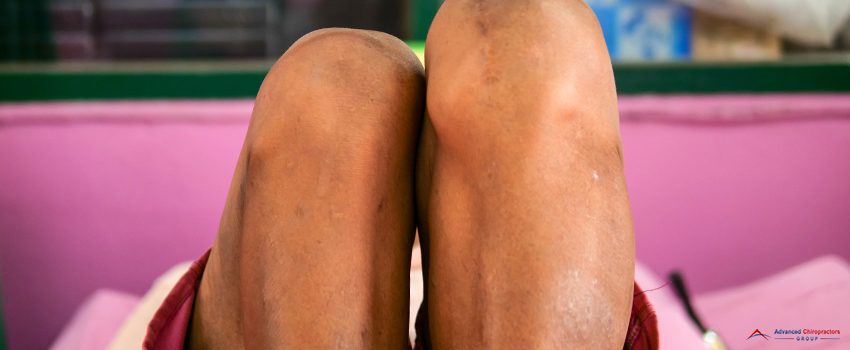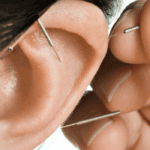Leg length discrepancy (LLD) is when one leg is shorter than the other.
This is a problem that affects many people. LLD can make daily tasks more difficult for some people. Luckily, there are surgical and non-surgical treatments available.
Licensed chiropractors help people with leg length inequality. Advanced Chiropractors Group is here to share everything there is to know about LLD and chiropractic care. With a chiropractor, living a comfortable life is possible.
What Is Leg Length Inequality?
Anyone with a condition called LLD has one leg shorter than the other. The severity of the condition varies from one person to another.
The discomfort of having different leg lengths is noticeable. A person may feel that one foot is hitting the ground too fast while the other exerts more effort to stretch. This can significantly impact the hips, legs, pelvis, and spine.
Uneven leg length comes in two types:
1. Anatomical LLD
Anatomical LLD is the least common type. It results from congenital and developmental disorders or an insult to the growth plate caused by an injury, inflammation or infection, radiation, or tumor.
2. Functional LLD
Functional LLD, on the other hand, affects a large portion of the population. There is no true difference in the actual leg length. A lateral pelvic tilt happens, which creates inequality between the lengths of your legs. The discrepancy may vary from 5 millimeters to 30 millimeters.
The discrepancy may not seem much, and one may not notice the difference. The symptoms may also be subtle or blatant, depending on the gravity of the leg length discrepancy.
Here are some of the symptoms to watch out for:
1. Poor Posture
When you have LLD, your posture is off. If your shoulders are tilting more to the other side, it could mean that you have uneven legs. Poor posture leads to spinal dysfunction, joint degeneration, and back pain.
2. Walking Problems
Walking problems are another sign of LLD. Walking problems can include a stiffer gait, walking at a stiffer pace, or bending your neck and head. One of your legs may be shorter if you are toe-walking or limping.
3. Hip Pain
LLD can cause hip pain. There may be swelling, tenderness, and joint pain. The difference between your legs’ lengths may affect the intensity of the pain. It is also possible to have difficulty sleeping.
4. Balance Issues
Uneven legs mean balance issues. When you have problems with your balance, you may feel lightheaded or dizzy, as if you are unsteady or the room is spinning. You may feel these symptoms when you’re sitting, standing, or lying down.
5. Sciatica
When there’s an imbalance in your body, several symptoms manifest; one of those symptoms is sciatica. You may feel weakness, numbness, or pain radiating through your buttocks, lower back, legs, or feet.
6. Knee Pain
Another symptom associated with unequal leg length is knee pain. Because of the length difference, the force you exert on one knee may be more than what you put on the other. You might experience weakness, pain, swelling, or warmth in the affected knee.
Unequal Leg Length: What Are the Causes?
There are several reasons you might experience leg length inequality. As previously mentioned, there are two types of LLD — functional and anatomical, and both have different underlying causes. Let’s discuss them further:
1. Bone Infection
When a child acquires a bone infection at a young age, it may affect the growth of the bone in the affected area. A minor infection on the skin may lead to a joint or bone infection like osteomyelitis or septic arthritis. Over time, the bone may die or may require medications to function.
2. Bone Diseases
Another thing that can cause uneven legs are bone diseases. Certain kinds of dysplasias cause a discrepancy in the length of the legs. Some of these conditions are:
- Ollier Disease
- Neurofibromatosis
- Multiple Hereditary Exostoses
3. Previous Trauma to the Bone
A broken leg could lead to leg length discrepancy if it didn’t heal in its primary position. This usually happens when the bone breaks in more than one place. Also, if it was an open fracture, the muscle tissues and the skin surrounding the bone were severely exposed and damaged.
Apart from that, if a child’s bone gets injured right in its growth plate, it may result in slow-moving growth or complete interruption of the bone’s development.
If the child’s injury didn’t affect the growth plate, the broken bone would grow faster after it healed than the other leg, making it longer than usual. This phenomenon is common in femur fractures.
4. Idiopathic or Unknown
In some cases, the reason for the unequal leg length is unknown. Some LLD cases are usually congenital, but the length difference is not noticeable. However, as a child grows up, the inequality between the legs becomes evident.
What Are the Ways to Detect Leg Length Inequality?
If you suspect that you or someone you know has leg length discrepancy symptoms, immediately schedule an appointment with a medical professional.
Here are ways a doctor can confirm that you have this condition:
1. Doctor Consultation with Physical Examination
A doctor will perform an in-depth exam to confirm that your leg length discrepancy symptoms are indeed due to LLD.The doctor will also ask about your medical history, symptoms, and general health.
The physical examination may include the following:
- Gait Analysis: The doctor will observe the way you walk. With LLD, one tends to walk on their toes or put the extra work on their knees.
- Measurement of the Discrepancy: For this, you may be asked to stand up without your footwear. Leg length discrepancy measuring blocks are also useful.
2. Imaging Studies
Aside from the physical examination, imaging studies may be required to assess the severity of your uneven leg length. Some of the imaging studies are:
- Scanograms: With scanograms, the doctor will get a view of your ankles, hips, and knees. Then, the doctor will use a ruler to measure the difference between the length of your legs.
- X-rays: This is a traditional imaging study that will show the image of your bone. If the image is unclear, the doctor may order a scanogram to assess your condition further.
- CT scans: Compared to x-rays, CT scans show a more comprehensive image of the soft tissues and the bones. Your doctor might require this to measure your LLD.
Does Chiropractic Help with Leg Length Inequality?
Your doctor will present you with several treatment options when you suffer from LLD. The treatment varies from surgical to non-surgical. With a chiropractor, you have other options aside from medications and surgery.
Here’s how a chiropractor helps with leg length discrepancy:
1. Chiropractic Adjustments
A chiropractor will assess your condition and create a personalized treatment plan. If you live with LLD, the pressure you put on one side of your body may lead to a misalignment in your spine, joints, and muscles.
Chiropractic adjustments like hip adjustment and spinal manipulation may help. The duration of your treatment will depend on the severity of your LLD. Your chiropractor may work with your primary care doctor to best address your condition.
2. Heel Orthotics
Aside from hip adjustment, your chiropractor may prescribe you heel orthotics. They help improve balance and minimize the pain and symptoms you’re experiencing. Wearing orthotic heel lifts will help your legs regain balance, treating the misalignment in your pelvis and hips.
3. Soft Tissue Therapy
Depending on the extent of the imbalances, your chiropractor may recommend soft tissue therapy in combination with chiropractic adjustments. This will help relieve inflammation and pain, improve posture, and enhance circulation.
4. Rehabilitation Exercises
Your chiropractor may also introduce rehabilitation exercises to improve your range of motion and retrain your muscles to move normally.
Here are some leg length discrepancy exercises you can do at home:
Leg Split with Quadratus Lumborum Stretch
- Sit on the floor and spread your legs as wide as possible.
- Reach your right hand over and touch your left foot.
- Do the same with your left hand and reach for your right foot.
Chid’s Pose with Hand Reach
- Sit back on your heels and bring your forehead close to the floor.
- Stretch both of your arms in front of you and place them flat on the ground.
- Walk your hands over to the right to lengthen your spine. Hold this position for 30 seconds
- Do the same to your left side.
90/90 Stretch
- Sit on the floor and put your right leg in front of you at a 90-degree angle. Make sure your ankle and knee are touching the floor.
- Extend your left leg to your left side and bend it at the same angle.
- Using your right hand, reach forward. Push your right hip in the other direction.
- Do the same with your left hip.
Aside from these leg length discrepancy at-home exercises, your chiropractor may also recommend lifestyle changes and supplements to help you improve your condition.
Advanced Chiropractors Group is Here for You
Advanced Chiropractors Group will explain the answer to the question: “Why is one leg longer than the other?” We have a network of licensed chiropractors in Vail, CO, ready to help you.
When it comes to your well-being, be proactive. If you or anyone suffers from leg length discrepancy, give us a call. We can’t wait to assist you








